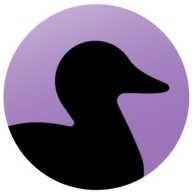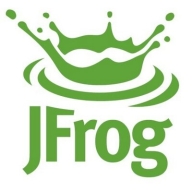

Black Duck and JFrog Xray are competing in the software composition analysis market. Black Duck holds an advantage with its comprehensive features and appealing pricing, while JFrog Xray is noteworthy for its robust support and ease of deployment.
Features: Black Duck provides extensive code scanning with deep vulnerability detection and compliance management. It automates component analysis with a vast knowledge base, offering robust vulnerability identification and policy management. JFrog Xray excels with real-time artifact analysis within the CI/CD pipeline, offers comprehensive reporting and detailed internal dependency hierarchy display. Its seamless integration with Artifactory enables efficient project onboarding and prioritization of vulnerabilities.
Room for Improvement: Black Duck can enhance its security side, particularly in vulnerabilities identification. Additional enhancements in UI and user experience could strengthen its market position. Improvements in scalability and support for more dynamic environments could also be beneficial. For JFrog Xray, reducing initial setup complexities and improving documentation can facilitate smoother onboarding. Expanding integration capabilities beyond Artifactory and offering better user training materials could enhance user experience.
Ease of Deployment and Customer Service: Black Duck focuses on on-premise deployment with substantial documentation support. JFrog Xray offers both cloud-based and on-premises solutions, providing greater flexibility and faster setup. Its customer service is known for responsiveness and proactive assistance, giving it an edge over Black Duck in this area.
Pricing and ROI: Black Duck is competitively priced with high ROI potential due to its extensive features. It is considered cost-effective, appealing to budget-conscious organizations. JFrog Xray may present higher initial costs but demonstrates significant long-term value and efficiency gains, particularly with its valuable integrations in dynamic DevOps environments.
If you're using it on critical external programs where there is regulatory compliance on ensuring that the source code is clean from open-source, there's substantial ROI.
There are some pain points with the response time and first-level support quality.
When we need clarifications, we contact our account manager, and they arrange demos.
I would rate the scalability of Black Duck 8 or 9.
It can improve on the security side of it, specifically vulnerabilities identification.
There are areas for improvement such as false positives and the scanning of containers.
Black Duck does not have the SBOM management part.
X-ray needs improvement in supporting more than one database, as it currently only supports PostgreSQL.
The basic scanning capabilities come with Artifactory, however, curation requires additional licenses.
The most valuable feature of Black Duck is the composition analysis feature, which is effective for security risk management.
Black Duck's ability to identify dependencies very accurately has been most valuable in identifying and mitigating risks.
The software composition analysis is most effective for security risk management.
The most valuable features of JFrog Xray are its curation capabilities, its native integration with Artifactory, scanning for vulnerabilities, and license compliance features.


Organizations use Black Duck for compliance, internal audits, license management, and security, scanning software to identify vulnerabilities, non-compliant code, and dependencies in open-source projects.
Black Duck integrates into CI/CD pipelines and DevSecOps processes, helping multiple industries detect and handle risks associated with open-source usage. Users leverage it for source and binary analysis to ensure security and compliance before software release. Automatic component analysis, effective vulnerability scanning, and a comprehensive knowledge base are some of its valuable features. Despite needing improvements in scanning speed, UI, and documentation, Black Duck remains crucial for ensuring open-source security and compliance.
What are Black Duck's most important features?
What benefits or ROI should users look for in reviews?
Black Duck is implemented by industries ranging from finance to healthcare, addressing security and compliance in open-source usage. Financial institutions employ it to manage license risks and ensure audit readiness. Healthcare organizations use it to comply with stringent data protection regulations, ensuring patient data security and privacy. Tech companies integrate Black Duck within CI/CD pipelines to maintain the security and compliance of software products before release. Its deployment varies, tailored to meet the specific risk management and compliance needs dictated by each sector's regulatory environment.
JFrog is on a mission to enable continuous updates through Liquid Software, empowering developers to code high-quality applications that securely flow to end-users with zero downtime. The world’s top brands such as Amazon, Facebook, Google, Netflix, Uber, VMware, and Spotify are among the 4500 companies that already depend on JFrog to manage binaries for their mission-critical applications. JFrog is a privately-held, global company, and is a proud sponsor of the Cloud Native Computing Foundation [CNCF].
If you are a team player and you care and you play to WIN, we have just the job you're looking for.
As we say at JFrog: "Once You Leap Forward You Won't Go Back!"
We monitor all Software Composition Analysis (SCA) reviews to prevent fraudulent reviews and keep review quality high. We do not post reviews by company employees or direct competitors. We validate each review for authenticity via cross-reference with LinkedIn, and personal follow-up with the reviewer when necessary.